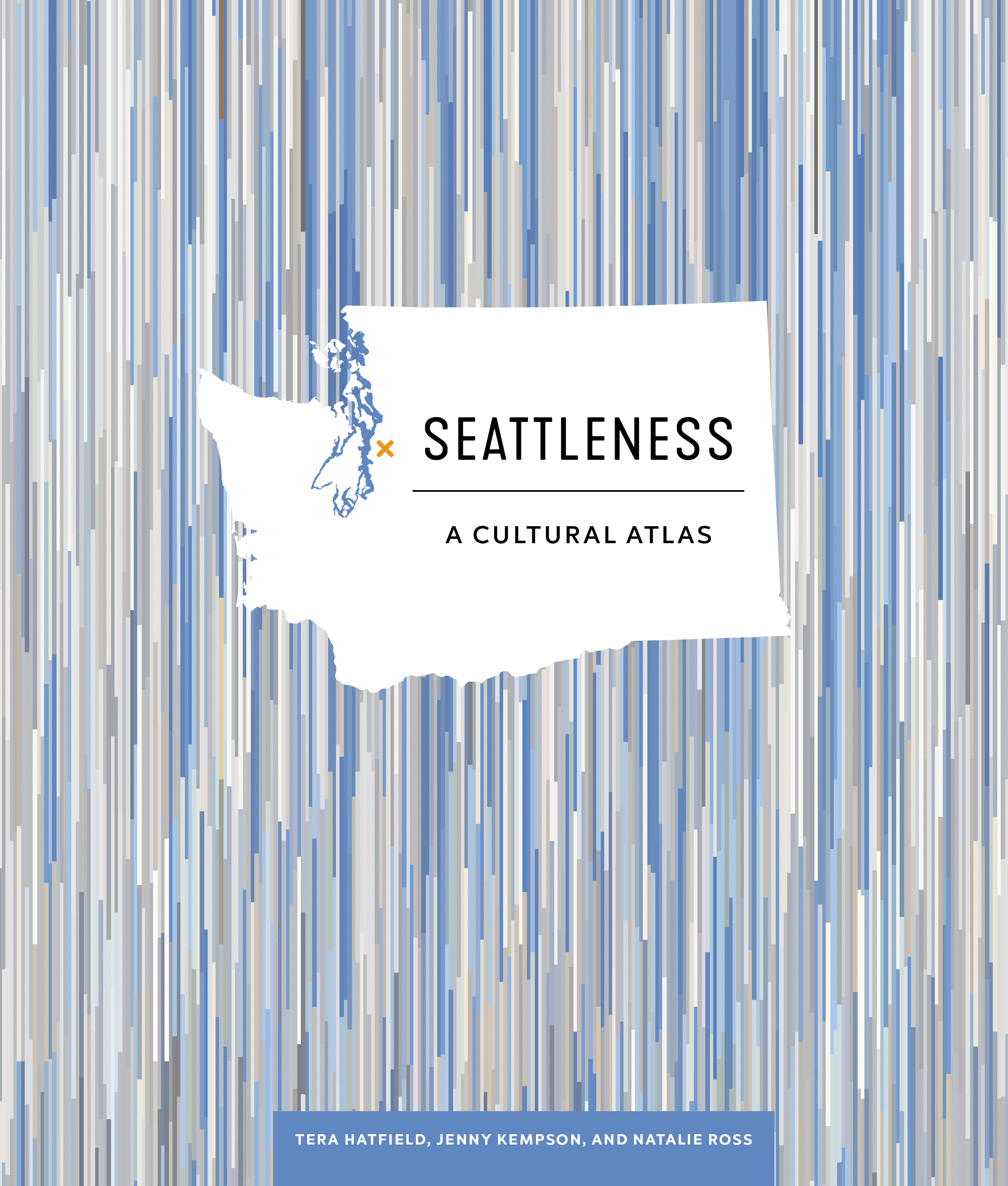Published in October 2018, Seattleness: A Cultural Atlas explores the nature of place through the lens of Seattle, one of the fastest-growing cities in the nation. Co-authored by three people, the writers include landscape architecture alumna Natalie Ross (MLA ’11)

In this interview, Ross discusses the book and how she drew on her landscape architecture background during the writing process.
How would you describe Seattleness to potential readers?
Seattleness is a new look at mapping, it takes themes that are familiar to many Seattleites and visualizes them in new ways. We used non-traditional maps, infographics, and illustrations to tell stories about Seattle and the Puget Sound region. These stories reveal the past, present, and possible future of this dynamic place.
What was the hardest part about writing this book?
One of the hardest tasks was figuring out the best way to visualize particular topics or datasets. We wanted the book to be full of unique graphics with no repeated content and had to get very creative to accomplish this. One example was the pinball “map,” a combination of a timeline and locational map which we fit into the shape of the classic pinball game “Medieval Madness.”
What impact did your career and experiences as a landscape architect have on the direction/creation of the book?
All three authors have backgrounds in different disciplines, but share the thread of landscape architecture. We all have an interest and knowledge in the built environment of Seattle, and so many of our maps deal with the physical characteristics of the city; such as the growth of buildings over time, layout of streets, environmental changes, and impact of trees on the city. The most direct outcome of the landscape architecture connection was the map called “Six Degrees of Olmsted,” which diagrams the connections many local landscape architects had with F.L. Olmsted.
How did you and your co-authors decide what topics to include?
It was difficult to narrow down the topics to under 50. We originally had hundreds of ideas for maps that would be interesting to explore, but couldn’t follow through on most based on the availability of data, permission from sources, or a good way to visualize the information. We also wanted to balance data heavy topics with things that were lighter and easier to understand at a glance to create a rhythm throughout the book.
What’s your favorite topic or spread in Seattleness?
I really enjoyed working on the map “Jazz on Jackson,” which charts the stories and locations of Seattle’s great Jazz musicians in the predominantly African American neighborhoods to the south and east of downtown. The bulk of the research came from a book by Paul DeBarros called Jackson Street After Hours which describes many prohibition-era nightclubs that hosted widely known musicians such as Jelly Roll Morton, Ray Charles, and local greats Herman Grimes and Palmer Johnson. It was fun to discover music by these local legends, and dig into map archives to find long-lost underground establishments. I also did the illustrations, which is one of my favorite things to do!
What advice do you have for current design students?
Writing a book is daunting, it’s like having a second job for a while. At times, we felt in over our heads. But in the end, I’m so glad we persevered. My advice to design students is to always have a side project and always say yes to opportunities that come your way. Learning new things and being creative outside your day-to-day work is necessary to stay creative and curious in your practice.
Growing up, there weren’t many picture books where Meenal Patel (B.S. ’06, Graphic Design) could see herself, a lack of representation that persists to this day. After witnessing first hand the impact picture books had on her nieces, this alumna decided to pursue her dream of becoming a children’s book author.
Faculty and staff from across the College of Design are celebrating their latest book releases on Wednesday, November 20.
The fields of medical device and apparel design may not seem to have a lot in common, but alumni from the College of Design are changing that.





